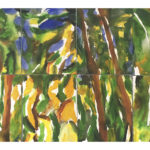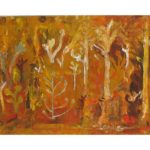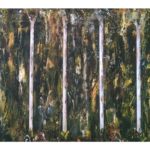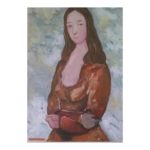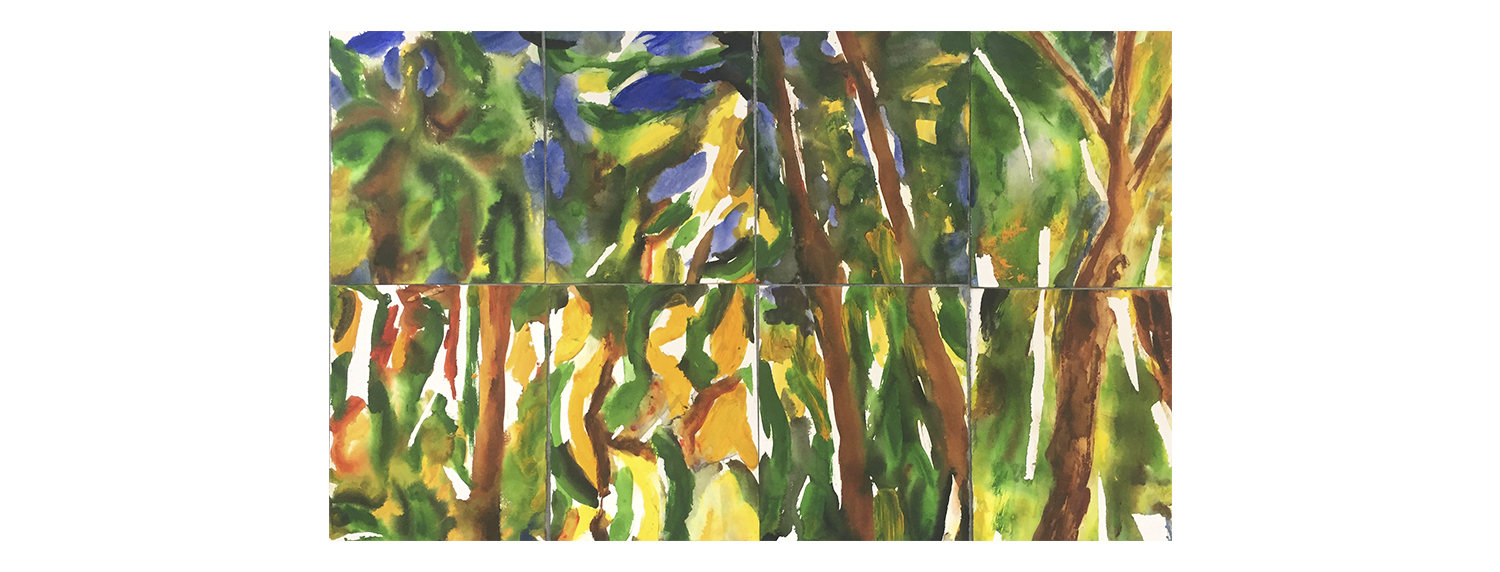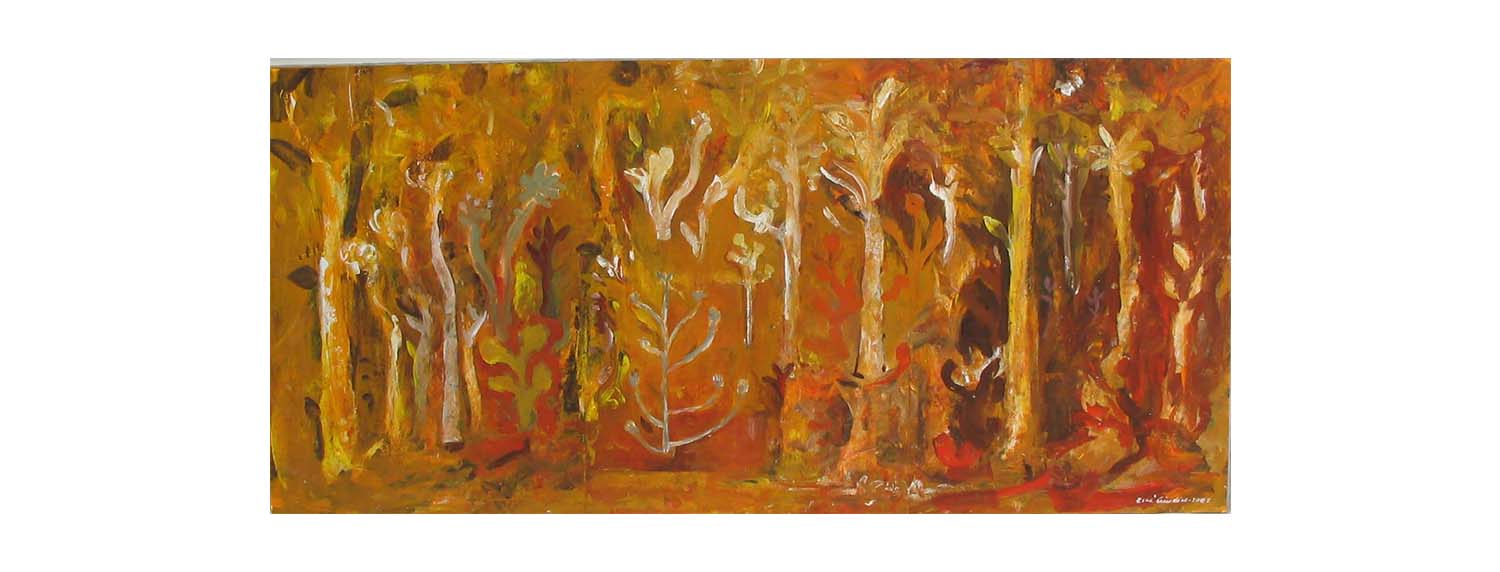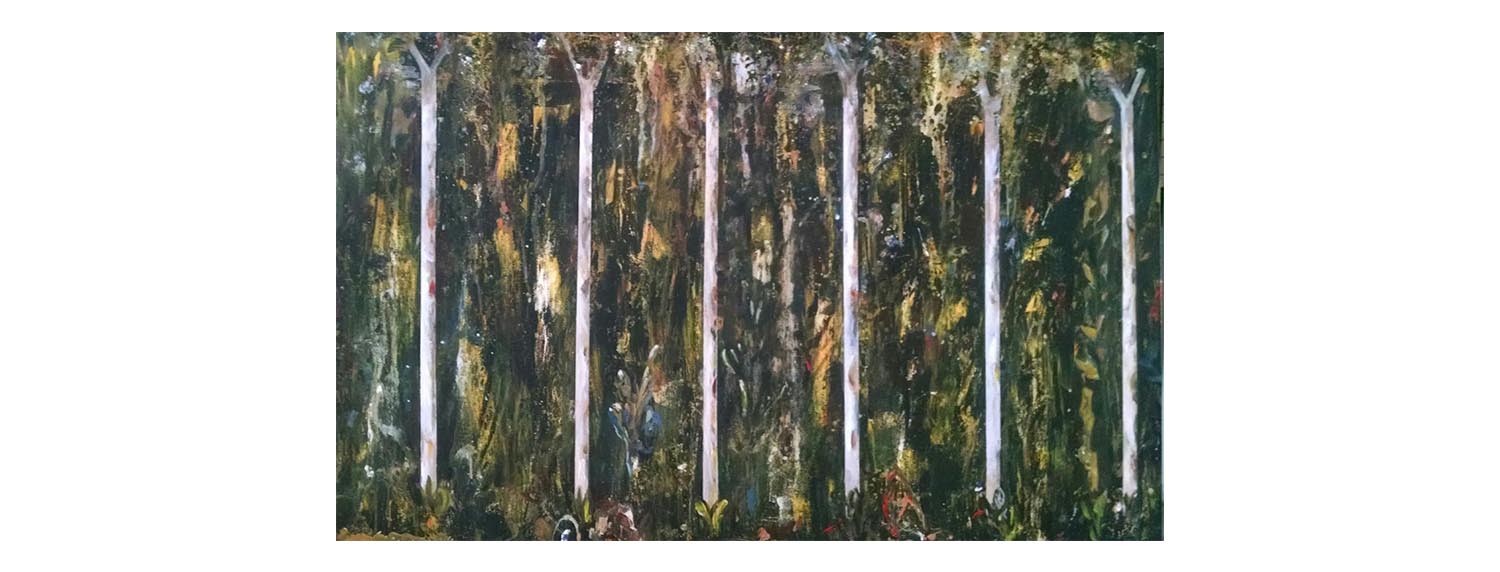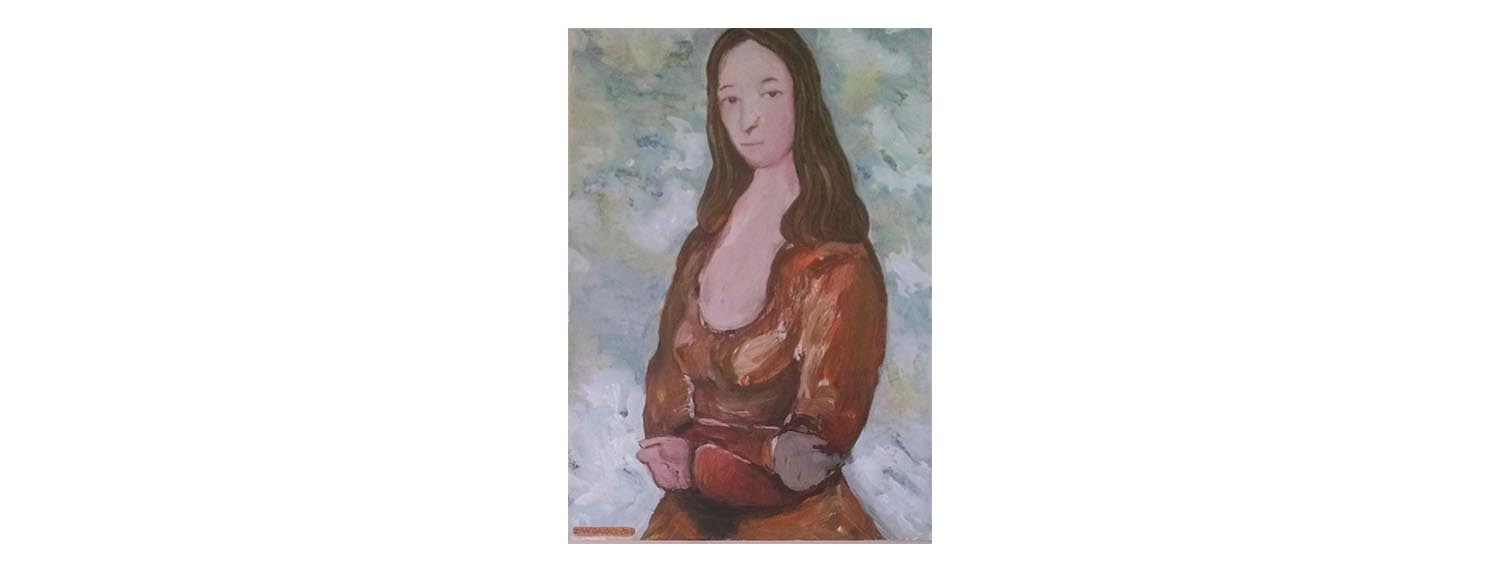Through his signs, the images go through Bahia´s sertão and Atlantic Forest where he was born and lived his childhood, and from it an action of telling stories, registering spaces, drawing impressions, going through adult life in Brasília´s urbanity, where humor and irony were incorporated. Without forgetting the city of Bahia, the city of his adolescence and youth, the city which he has returned to, defined by formation and information, knowledge about art and the world, when the artwork gained a drama which joined the imagination, sadness and joy, and becomes imperative to perform a work that is not a social critique. Many words could punctuate his trajectory – intriguing, intense, figurative, among several others – and all of them would fit a moment or several moments of his art, drawing and painting that are mixed and completed by a path led by the artist to instigate, in his themes, and in the technique and tones, the demand for an art to make you think, questioning the present time and the human condition.
Zivé Giudice was born in Jitaúna, State of Bahia. He graduated from the School of Fine Arts of Federal University of Bahia in 1980. Among his individual expositions: 1985 – Escritório de Arte da Bahia, Salvador, BA; 1997 – Galeria de Arte da Casa Thomas Jefferson, Brasília, DF; 2000 – Espaço Cultural Le Corbusier, French Embassy, Brasília/DF; 2004 – A cidade é bela, Espaço Cultural Politec, Brasília, DF. In collective exhibitions: 1998 – Bahia à Paris – Arts Plastiques d’ aujourd’ hui – Galerie Modus, Paris, France; 1998 – Cem Recuerdos para Garcia Lorca – Espaço Cultural- 508 Sul – Brasília, D.F.; 1999 – Arte em um Céu para Todos – Pipas pintadas por artistas latino-americanos/50 anos dos Direitos Humanos – Latin America Memorial – São Paulo. He was awarded in University Halls; in 1986 – VII Mostra do Desenho Brasileiro – Curitiba/PR; 1986 – IV Salão Arte-Pará – Honorable Mention.
You were born in Jitaúna, city in the countryside of Bahia. What is there of your city, your people, your childhood as a field of reference or of investigation in your art? Is this condition of origin, its history, how is it translated in your art? Is there a memory of this countryside in your form of expression, in the thematic concerns to create your work?
Yes, I do hold memories from Jitaúna, where I was born; of my education from an Italian, stern, Catholic family; the freedom of indiscriminated coexistence with all social classes, ethnic groups, etc., keeping in mind that Jitaúna, due to its cocoa agriculture, was formed by both rich and poor people. My artwork is contaminated by it; in the long run, each one of my work is self-referential.
Then you have lived in Brasília for many years. What does this experience of living in the capital of power bring to the artist? What has this experience triggered in the human being and the artist?
The city of Brasília interacts with the Congress in the same way other capitals do. Power does not interfere in the city, except in the services that are equally provided elsewhere. So I lived in Brasília with the same critical consciousness which I lived, and still live, in Salvador, when it comes to power.
Let’s talk about your creation: What kind of stimulus triggers the creation of your work? How is it processed? How is the dynamics of your creation performed? Entirely thought through? A little empirical? Sensitivity? Answers to everyday questions? Subjectivity? How are your themes chosen?
Usually I have an idea. I start working on it. During the work´s construction process, inevitably other signs and information related to the initial idea pop up; it almost always results in something else entirely different.
Still on creation, from what moment on do you decide to work on a certain question? And after this decision, the choice of material, medium, expression, shape and color come along or does this definition accompany the process, since you have been exploring an infinity of them all through themes, shapes, colors, expression in your artwork?
Shape, color, matter, concept, they talk to each other the way I mentioned earlier. My artwork always result from a lot of hard work, questioning; talent and inspiration no longer seem enough to me. I think my artwork has something cerebral and visceral.
Your main art is painting. You are a painter. Maybe it’s an overly objective statement, but that’s how I see it. But this painting has modified itself throughout all this time, from a figurative beginning, it continues figurative, as far as I know, but the dramatic density of the beginning stands out today in other points such as irony and humor, as well as an intelligence of execution and precise accuracy. Does this come from an external world or an experimental freedom? Does it remain like that? In what way?
For a long time, back when I was starting, I used to draw with intensity. I was considered a drawer. I learned to like painting as well. I like drawings in painting. Even when my painting is vigorous, I like the memories of drawings when they pop up, as in archeology; impressions of them.
In your art today, we see traces of pop art, usage of comic book characters, but mass media, which is completely different from your beginning, more grounded on the imaginary. What led you to these themes? Is there a vintage sensitivity and an opening for new painting possibilities in your artwork today? Through it, you keep telling stories, registering spaces, extracting impressions? Does this artwork you create bring a vintage sensitivity or feeling, of the here and now?
Your first question asked what I bring from my city Jitaúna; that is something I bring as well: the memory of starting to draw, reproducing characters from comic books: Zorro, Batman, Tarzan, Flash Gordon etc. Then you arrive at the capital, enter the School of Fine Arts, become aware of the political scene and watch the cultural scene, engage with artists and intellectuals, observe and absorb everything, mixing everything, start producing an artwork with an approach that manages to translate this cultural broth. Other experiences start giving other tones in other works. Suddenly, I’m once again interested in the characters who propelled me to the visual arts, now in a critical and ironic appropriation; and la nave và.
This “reality” brings a great deal of humor, irony, social criticism to your drawing. Is this your signature to what is perceived as your creative work? What would other factors be? But if they are not, or if they are so, are there others that you perceive as being very personal in your work?
I think my artwork has always been committed to social criticism. At times, more acidic and visceral, in others, subliminal. Now I consider it more ironic and with a bit of humor.
Is your art your life experience? Your reality? The real, or the reality, is one of your painting´s motivators, which leads to some of your artwork or stages or series in which you seem to have a character of exposition, of an artist engaged in social or political battles, in a human sense. Are these subjects inherent in your art or are they just concerns of the citizen expressing themselves, since he is an artist, in his art? Or how do you see that, even being a paintwork of its own context, your work, apart from history, politics, sociology or archeology or psychoanalysis, just by its images, being so full of significations that they become integrally and denominatively your painting?
I used to think that the manifestation of art, whatever the language, should be fully committed to revolutionary struggles. It didn’t take too long for me to understand that art itself is already a sufficiently revolutionary, libertarian and portentous, transforming manifestation.
What does encourage you to be a painter? Sensitivity, a vintage portrait, an expression of struggle, a way to discuss and analyze the present? Or is it just a painting? Should we not search or relate to it in other fields besides the painting itself?
I like to think that I create, produce and reflect upon art and that I do it as my way of insertion in life, in society. Sometimes with pretensions to be contributing to the civilizing process. And others, for the pleasure of exercising this instance of human nature; the sensitivity of the creative act.
How do you feel or see the moment of the visual arts now? The market, is there a market? How about your work in it? How do you feel your presence in this universe?
The visual arts scene of a specific place, as well as any other language, depends on functioning public spaces, schedules committed to contemporary languages, exchanges with other centers, appreciation of the history of the place, art galleries, and so on. I believe that the production of Visual Arts in Bahia today has an unquestionable quality. There have never been so many artists conceptually well evaluated by national and international critique alike. It is worth highlighting the importance of the Paulo Darzé Galeria gallery for their marvelous work in building a market sensitive to contemporary production, for spreading and stimulating current art.
What about Bahia? Is Bahia still somewhat conservative, not only in the market, but in the reception of your art, and in the art scene as a whole? How do you see art now in Brazil and, more specifically, in Bahia? Does it have energy? Is it current? Is it a response to the yearnings of our times? What can you do about it?
I think I already answered that in the previous question.


